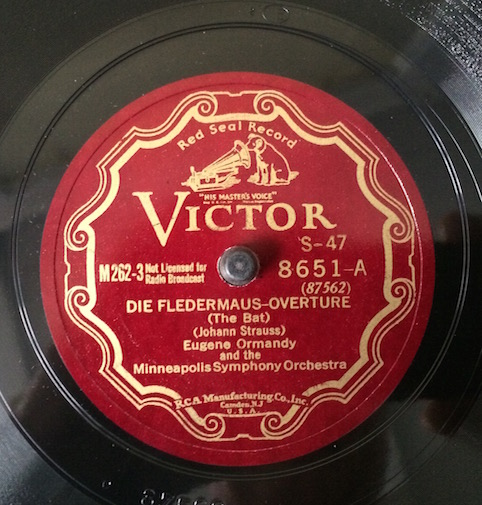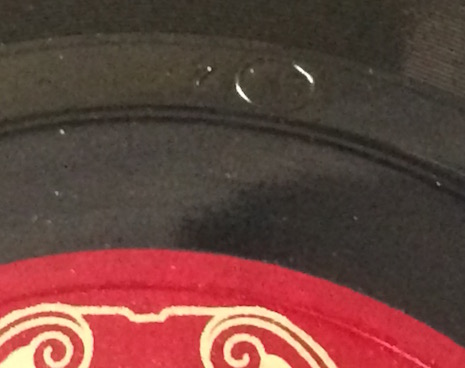I am but a moderately-involved collector of 78-RPMs, but these days even that fleeting interest separates me from the crowd and then some. Let’s face it: most people don’t care doodley-squat about great-granny’s old 78 records: scratchy, tinny, short playing times. Heavy. Breakable. Usually dirty, dusty, and altogether icky. Even if you have a moderately modern record player, you probably can’t play them since gramophones designed for LPs can’t deal with 78s. Not only is the turntable speed all wrong, but the very stylus that tracks an LP record groove will do nothing but irreparable damage to a 78. The grooves on a 78-RPM shellac disc are vastly wider than those on an LP and require a not only a larger, but a differently-shaped stylus.
To even play a 78 RPM disc requires a certain investiture of time, money, and effort these days. It’s not as though you can run down to the corner store and buy yourself RCA’s finest gramophone for 1935. They don’t make any of that stuff any more.
Well, they almost don’t make it any more. Amazingly enough, new turntables capable of playing 78 RPM discs are out there, including the dazzling Rega Planar 78, a tip-top modern turntable that is designed to play 78s and nothing else. Several fine cartridge manufacturers, including Grado and Shure, make first-class phono cartridges with the appropriate stylii for playing 78s. You can also press a classic table, like a Technics 1200, into use as a 78-RPM table without much difficulty.
Oh, other bugboos arise, such as the fact that the equalization applied to 78s was quite different from the RIAA curve applied to LPs from the early 1950s onward. The “phonostage” amplifier—which boosts the minuscule signal coming out of the phono cartridge—is designed to work with the RIAA curve, so it’s possible that odd results will come from using a modern phonostage. But that’s easily enough remedied: nowadays equalization curves are a moment’s work to apply in software, after all. Even better, at least one of the available 78 cartridges (the Grado 78e) would appear to feature a gentle treble rolloff that complements 78s quite nicely. I use that cartridge, and I can tell you that I rarely need to re-equalize a 78 that I’ve digitized. Most of the time I’m very happy with the overall sound that comes off the needle.
RCA Victor’s extra-special “Z-Scroll” discs make up a special subset of 78s. These were manufactured during the 1930s on especially fine shellac, and were much sturdier than the norm, designed specifically for use by radio stations and in libraries where both durability and enhanced sound quality were desirable. Z-Scrolls aren’t all that common, but if you can find one in good condition, you’ve got the state of the art in disc manufacture circa 1935 or so.
You can spot a Z-Scroll by its label—the scrollwork (common to Victor, then RCA Victor, discs from about 1926 through the 1930s) is on a slightly smaller label than normal, the red-seal color is more distinctly maroon than most discs, and the “RCA Manufacturing Company” logo on the bottom is printed on an arc instead of straight across. The “z” indicating the special pressing is found on the deadwax portion of the disc—that’s the part between the end of the grooves and the label. Furthermore, as long as the disc is in good condition, it will be more shiny than your average shellac disc, almost mirror-bright in fact.
Z-Scrolls are less susceptible to surface noise and inner-groove distortion, although both are endemic to the medium and impossible to eliminate altogether. They are overall noticeably louder than regular 78s, so much so in fact that you might need to turn down your usual input volume when digitizing them.
Although every collector has his or her own strategy for digitizing 78 discs, in the case of Z-Scrolls I am committed to minimal manipulation. I’ll take care of any side-joins that are needed (78s play only four some-odd minutes to a side, and so even fairly short pieces require being broken into multiple sides) and apply very light click removal. The Grado 78e cartridge is susceptible to a faint 60 cycle hum, and so I always apply a light filter for that—just the 60-cycle fundamental and two harmonics only. Apart from ensuring a healthy overall volume level, and adding a brief fade-in and fade-out, that’s all I’m inclined to do. I’ve found that any more invasive noise removal alters the sound unacceptably. Groove noise on a Z-scroll is so faint as to be minimally distracting, so I don’t bother doing anything about it.
Here’s a Z-scroll label from 1935:

And here’s the “deadwax” area with the “z” impressed in the shellac:

